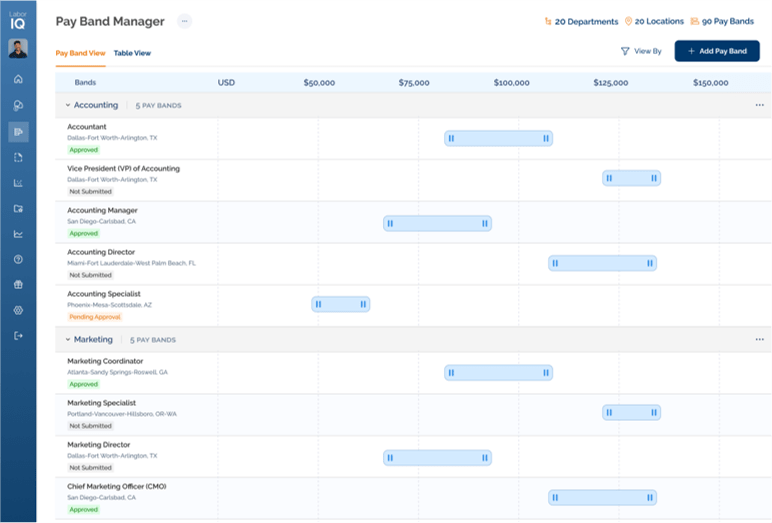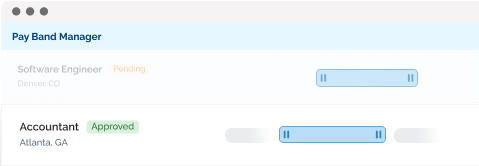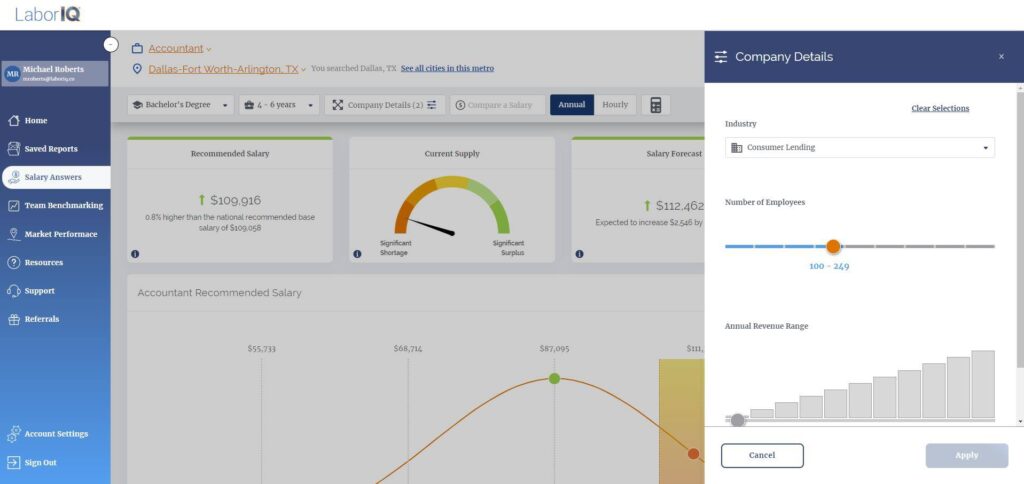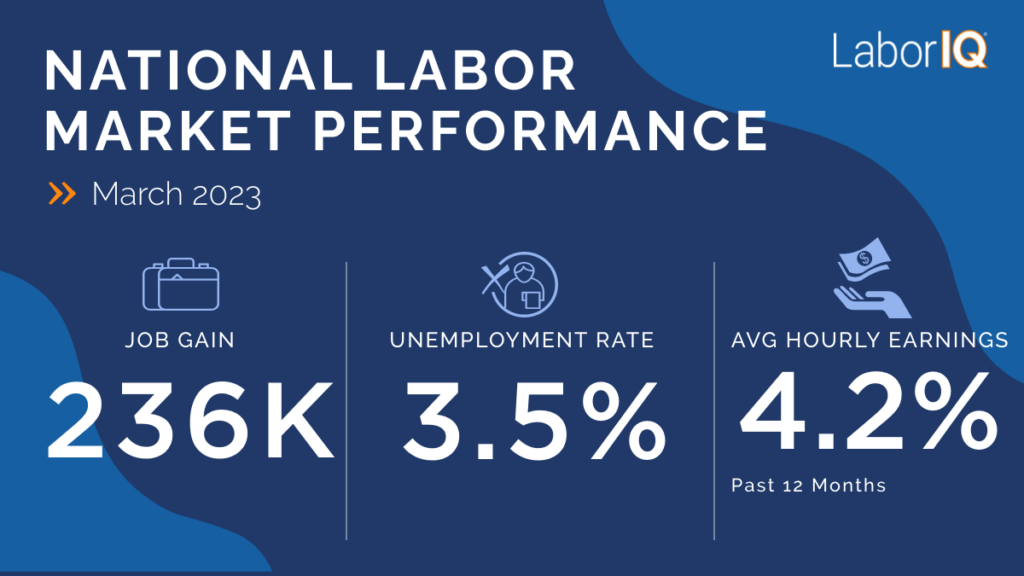Are current market-competitive salaries not aligned with your expectations of what you should pay employees?
Or does one of the below situations sound familiar to you ❔
-
Wild swings in the job market made it impossible to keep pay competitive against competitors.
-
You interviewed many candidates who were a great fit, but you were not able to offer their desired salary and lost them to another offer.
-
You made offers to new hires that far exceeded the salaries of current employees in those same roles.
-
Salary transparency legislation has made it difficult to post salary ranges competitive enough to interest candidates and not upset existing employees.
A recent article published by the Wall Street Journal states the so-called Job-Market Boom Is Over. Salaries are finally starting to normalize and come down from record highs. This pendulum of salary changes has left many businesses at a loss for setting salary ranges to create a consistent compensation strategy.
Most companies establish pay ranges to ensure a fair and equitable pay system for their employees. As your company grows, this can become incredibly important to help combat equal pay claims and develop clear and communicable pay structures, especially as you employ more than one person in the same role.
It doesn’t have to be complicated to set salary ranges for your jobs and doing so can give you clear guidelines to follow during merit planning, hiring and backfilling roles.
Start by downloading our step-by-step ranking and job grading template and follow the steps below:
Step 1: Set your goals and get prepared
Determine your organization’s goals for setting salary ranges. For example, an employer can choose to lead, lag or match the market when compensating employees. Before you get started, use this tool to align your company’s overall compensation strategy.
Whichever philosophy is decided, get alignment and executive buy-in before setting salary ranges.
Job responsibilities and requirements are the most crucial factors to understand value and pay requirements. You will need each of your jobs well documented with accurate job descriptions to get started.
Step 2: Rank Jobs using a job evaluation method
Next in establishing pay structures is to evaluate the makeup of your jobs and determine how you will assign a value to each one. There are accepted practices and methods for how to go about this process.
Below, we will step through several methods used for internal job evaluations. Most of the time these approaches are broken into two categories, analytical and non-analytical.
- Analytical – Jobs are evaluated by segmenting by the core components of that job and viewed separately from the job itself. Often this is a preferred method as it can provide defense in a claim against equal pay.
- Point-Factor Rating Method: Each job is broken down into core competencies, which are described as compensable factors. These factors are assessed separately, and points are allocated according to the level needed for the job. Often more advanced jobs will have a higher points value.
- Factor Comparison Method: Like a point rating system, as each role is segmented into factors, but no points are given.
Point-Factor Rating Method Example:
- Non-Analytical – Each job is holistically viewed. This is often a less objective approach that is simpler, more cost-effective and less time-consuming.
- Ranking Method: Each job within the organization is ranked based on how its responsibilities relate to other jobs, value-wise. This is often used by small companies with fewer redundancies in each job. If this is the first time you are setting salary ranges, this is a good place to start.
- Job classification or Grading Method: Jobs are categorized into ‘grades’ by evaluating the job skills and responsibilities, experience and requirements of each role. Usually, the company will pre-determine several grades and then categorize their jobs within those grades. Often wider salary ranges are necessary to accommodate distinct roles in the same grade.
TIP: We recommend selecting one approach to evaluate all jobs or at least narrow your approach by job family. This ensures consistency in how you determine the value of each role and a fair and equitable pay structure for your employees.
The Ranking Method and Grading Method are often used together. Jobs are ranked first in comparison to each other and then grouped together to establish grades and pay ranges. Use our template to create yours.
Step 3: Market Pricing
Before grouping or categorizing your jobs (if you choose to do so), you will want to ensure you are market-competitive in your salaries.
We recommend running a job-specific compensation analysis to ensure you accurately base your newly created salary ranges on today’s market rates.
Some things to take into consideration when running a comp analysis:
- Know the accuracy of your market salary benchmarks. Not all compensation data is created equal.
- Evaluate by job title and ensure you are looking at job responsibilities to confirm you are comparing the right job (job titles vary greatly between companies).
For a quick guide to running a compensation analysis, see our template here.
Completing a compensation analysis for each unique job will allow you to easily determine grade levels and a salary range appropriate for those grades. As you establish these target-market salaries for each job title, keep in mind your organization’s pay philosophy (lead, lag or match the market).
TIP: If your organization is still small, it is sometimes appropriate to just apply a salary range to the target market salary for each role. This is especially appropriate if there are few employees occupying the same position. If this sounds like your organization, skip to Step 5.
Step 4: Job Grades
Once you have completed your analysis and set a target salary for each job title, you may decide to group some jobs together and create job grades before setting salary ranges.
This really depends on how large your organization is and the redundancies you have across roles. To do this, you will group your jobs by looking at positions that rank most closely together in comparison with each other, but also share similar market salaries based on the compensation analysis that was completed and the target market salary for each job title.
It is completely up to you as to how many or how few pay grades you put in place. The smaller your company, the fewer grades you may choose to have. A small company may have only 4 grades, whereas much larger organizations may elect to have closer to 15.
TIP: Do not group job titles within the same salary grade that also have a market salary of greater or less than 15% from one another. This will ensure there is not a job title that is under-or-over-weighted in your salary grade, as you set salary ranges.
Step 5: Creating the Salary Range
Now that you have target market salaries for each job title and you have grouped your job titles into salary grades, you can establish salary ranges for each grade. It is common that salary ranges are 30 percent to 35 percent, but you may find that more advanced roles (executive level, for example) have a broader range, which can be greater than a range of 40 percent.
To establish a simple salary range, use the average of the target market salaries for each job title within a job grade as the midpoint and calculate the minimum and maximum salaries for the established salary range.
As an example, here are the formulas for a 30 percent salary range using the target market salary average as the midpoint:
- Midpoint = Target Market Salary Average (for all jobs that are defined in the job grade)
- Minimum Salary = Midpoint x 0.85
- Maximum Salary = Midpoint x 1.15
TIP: Using the Setting Salary Ranges Template linked in this article will calculate all your Job Grade Salary Ranges for you. This will make it super easy to aggregate and analyze your results.
As you review your new salary grades, if you notice that your new salary ranges overlap, that is okay. Overlapping salary ranges will make it easier to manage internal promotions without larger salary increases between grades.
Step 6: Action Items
Now that you have established your salary ranges and completed a compensation analysis for your employees and jobs, you may have some actions to take. If you are lucky, all your employees are paid within their salary range and have competitive market compensation; however, this is hardly ever the case.
So now what?
The first thing you need to determine is if any employees are paid above or below the salary ranges that have been established for their job grade. There are different actions taken given each of the circumstances below.
- Employees with salaries below job grade salary ranges:
- Evaluate if there is a mismatch in job title or grade that must be considered. Take appropriate actions to communicate any job title/responsibility changes.
- Provide pay increases to bring salaries within the job grade salary range.
- Beware of providing pay increases to underperformers. If an employee is not performing to the expectations of the position that they currently occupy, it is important to clearly communicate expectations and timelines for achievement.
- Employees with salaries above job grade salary ranges: Offer a one-time bonus to reward top performers instead of increasing base pay during merit planning season.
- Reduce the employees’ base pay to bring it within the job grade salary range but beware of the impact on employee morale and risk of turnover.
- Evaluate opportunities for employee development through certifications and training opportunities that allow the employee to upskill and advance in the role and subsequently job pay grade.
- Refrain from offering further base pay increases. Ensure that you clearly communicate this decision to all parties.
Having an agreed-upon compensation philosophy and documented salary ranges for each role ensures pay equity within your organization. Setting pay ranges can give you flexibility (within guidelines) when it comes to determining what to pay employees, what to offer new hires, and how employees can progress in their careers.
Clear communication around your processes for how you approach compensation can boost retention and help you better plan for merit increases and new hires.













































































